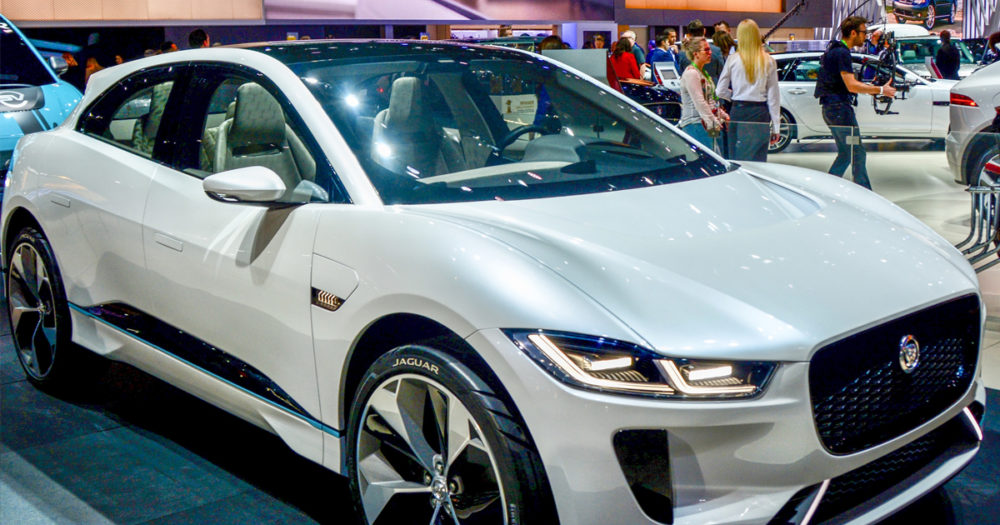The sales numbers are in for the first half of 2018 and more new car buyers than ever are choosing an electric vehicle (EV). Through June, over 123,000 new EVs were registered in the US, compared to 91,000 in the first half of 2017, an impressive increase of 35 percent. And it’s more than double the sales from just 3 years ago.
What’s driving increasing EV sales?
Much of the increase in sales was due to new models becoming available. First, let’s look at battery electric vehicles (BEVs, all-electric vehicles without a gasoline engine): Tesla led the way with the more affordable Model 3, notching over 22,000 registrations for the first half of the year. That’s more than the battery electric vehicle sales for all traditional automakers, combined.

Unlike the battery electric sales, there is not one dominant manufacturer of PHEVs. However, like BEVs, the addition of new models (like the Honda Clarity and Chrysler Pacifica) have helped to boost sales. The introduction of Tesla’s Model 3 has increased battery electric vehicle sales to new highs in the 2nd quarter of 2018. At the same time, sales from traditional automakers have fallen, giving Tesla the majority of the BEV market in 2018.
New models also helped grow the numbers of plug-in hybrid electric vehicles (PHEVs). Honda played a role in boosting overall sales by finally selling an EV in some quantity.
From 2010 through 2017, Honda had sold fewer than 4,500 EVs in the US but moved over 6,500 Honda Clarity plug-in hybrid EVs in just the first 6 months of 2018. It’s a bit of encouraging news from an automaker that has previously been a laggard in selling EVs, though they still have much room before claiming a leadership position in electric vehicles.
California still leads the way
While EV sales have increased across the US, California is still far ahead on EV sales. About half of all EVs are sold in California, a fraction that has stayed constant for the last 3 years. In total, over 6 percent of all new cars sold in the state in 2018 were EVs (plug-in or fuel cell powered). This is a significant and growing fraction of the new car market and would be even larger if all car brands had EVs for sale. About 8 percent of cars were EVs when looking only at brands that have an EV for sale.

EV sales were also boosted by Honda finally starting to sell a plug-in vehicle in volume. However, they are still far behind leaders like General Motors for cumulative EV sales in the US. Click to enlarge.
Some brands excelled at selling EVs in CA: over 16 percent of BMW-badged vehicles were plug-ins and over 10 percent of Chevrolets were EVs. On the other hand, Toyota and Honda, who sell the largest number of cars in California, had less than 4 percent EV sales (even less if you include their luxury brands Lexus and Acura, neither offering an EV).
Sales likely to accelerate with more models on the way
The next 6 months will bring important new competitors in the EV market, with several new long-range battery electrics slated to arrive. The new EVs include both luxury cars and more affordable models. Hyundai will launch their Kona battery electric with over 250-mile range later this year. Jaguar, Porsche, and Audi will all debut luxury EVs to compete with the higher end Tesla models. The number of plug-in hybrid models is also expected to grow, including the first EV offering from Subaru. If the past is any guide, adding more EV options (both more brands and types of vehicle) will help grow the sales share of EVs, even if not all are big sellers
Speed bumps ahead?
Some manufacturers are moving ahead with new EV models, while others are seeming to squander early leads in moving to electric vehicles. For example, Ford’s EV sales are down significantly this year, with the end of the C-MAX plug-in hybrid and no new electric products announced for this year or next. Nissan has also seemed to stumble a bit. They delivered the first mass-market all-electric car from a traditional automaker with the LEAF in 2010. However, sales of the LEAF have slowed, and Nissan hasn’t expanded its electric line up beyond that one model. Lastly, Tesla is of course fully committed to EVs, but is embroiled in controversy regarding its CEO Elon Musk and facing challenges ramping up and sustaining high volume EV manufacturing. Tesla’s difficulties could impact both its ability to continue to deliver existing models and the development of new EV models in the coming years.
Beyond individual automaker efforts, there is another potential source hinderance to the growth of EVs. The disconnect between state policies that are pushing EVs forward and federal efforts to rollback clean car standards and remove vital authority for California and the 9 other states that have adopted the Zero Emission Vehicle regulations. It’s unlikely that lack of leadership at the federal level will stop EVs. Automakers realize that the transition to EVs is inevitable, and policies around the globe will continue to push in that direction. However, irresponsible decisions by the current Administration could delay this transition here, harming both US drivers and the environment. The good news is that so far we are seeing continued development of EVs and growth in sales.


